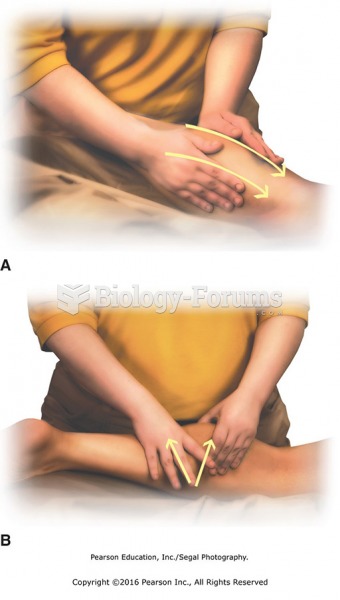|
|
|
There are major differences in the metabolism of morphine and the illegal drug heroin. Morphine mostly produces its CNS effects through m-receptors, and at k- and d-receptors. Heroin has a slight affinity for opiate receptors. Most of its actions are due to metabolism to active metabolites (6-acetylmorphine, morphine, and morphine-6-glucuronide).
The tallest man ever known was Robert Wadlow, an American, who reached the height of 8 feet 11 inches. He died at age 26 years from an infection caused by the immense weight of his body (491 pounds) and the stress on his leg bones and muscles.
Asthma cases in Americans are about 75% higher today than they were in 1980.
Signs and symptoms of a drug overdose include losing consciousness, fever or sweating, breathing problems, abnormal pulse, and changes in skin color.
Alzheimer's disease affects only about 10% of people older than 65 years of age. Most forms of decreased mental function and dementia are caused by disuse (letting the mind get lazy).
 Patient diagnosed with type 2 diabetes mellitus. Periodontal examination revealed deep periodontal ...
Patient diagnosed with type 2 diabetes mellitus. Periodontal examination revealed deep periodontal ...
 Using both hands, gently but firmly grasp the skin over a spot on the upper back, and lift the skin ...
Using both hands, gently but firmly grasp the skin over a spot on the upper back, and lift the skin ...





